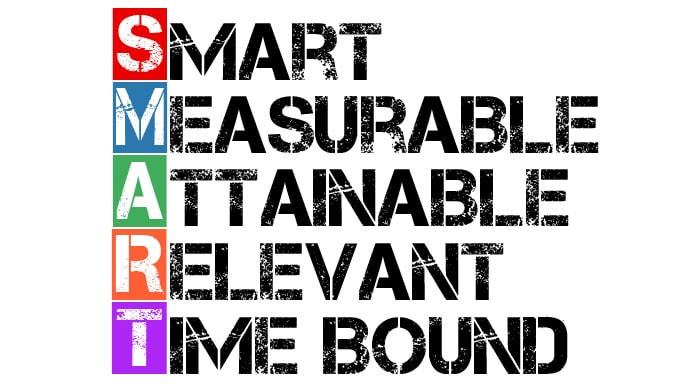Most people set their goals and resolutions at the beginning of each new year.
Yet the majority fails miserably to achieve most of them. But why is that? Is there a hidden mental barrier behind this failure?
Today’s post is all about goal setting and how to achieve them.
So sit tight because this might be one of the most critical skills, someone can acquire.
Reason #1: Too many goals
The greatest mistake most people do is that they set too many goals. This has many disadvantages.
First of all, it makes it too damn difficult to concentrate. Human beings aren’t optimized to multitask. Contrary to the 4-core processor of your smartphone, people are excellent on focusing only on ONE thing and take it to the end.
One of my favorite acronyms is F.O.C.U.S. That is: Follow One Course Until Success.
Step #1: If you have like 30 or 40 goals to achieve in 2017, pick your most important one. But only ONE.
Step #2: Of all the other goals that you have set, prioritize them, according to how close they’ll get you to your primary goal.
Step #3: Skip all the short-term goals that won’t take you closer to your single focus goal (either directly or indirectly) this year.
Step #4: Break down your focus goal into sub-goals. This way it’ll be more manageable.
Step #5: Come up with a plan to achieve all of these sub-goals.
Step #6: Take massive action.
Reason #2: Not setting SMART goals
Now that you’ve got the whole picture let’s see how to set a very SMART goal. So every goal you set should be:
Specific
Whether your goal is a long-term, mid-term or short-term, or even if it’s a direct or indirect one, it should always be specific.
Let me give you a couple of examples to illustrate this. “Let’s make an outreach to get more customers,” is a lame goal. Why? Because it’s not specific. “Let’s outreach every major influencer in our niche to form JVs,” on the other hand is very specific. Get the idea?
Measurable
Similar to the first one but a bit different. This second characteristic is all about numbers and tracking. Each goal should be 100% measurable in some unit. Again. To set it right there should be some deliverable that can be measured.
Example: “I want to become rich,” is not measurable. “I want to achieve a net worth of $1.000.000,” is totally measurable. The measurement unit in this example is the dollar.
Attainable
Never forget this part. Every goal should be realistically attainable. Moving the whole humanity to Mars doesn’t seem very attainable (unless you’re Elon Musk), right?
I know, I know, who am I to throw you my limiting beliefs? The point is to set goals that are challenging but realistic to achieve. Even Elon Musk’s vision when he was financially struggling wasn’t to conquer Mars. Let’s first become billionaires and then we can try move humanity to every fucking planet we want.
So a good example of an attainable goal would be: “I want to lose 20 pounds in six months.”
Relevant
Among the most critical parameters according to my experience. Relevance or in other words importance is how crucial is the goal to you. You may set the most beautifully crafted goals ever and yet fail because they don’t mean anything to you.
Only set goals that are very meaningful to you. Goals that you know will have a significant positive impact in your life. Don’t go for “I want to make $1m net worth before 40,” if you don’t care about financial freedom. You’ll fail miserably.
Time-Bound
To cement everything together, we got this last parameter. Each goal should be time-bound. In other words, complete it in a specific time frame.
Again, “I want to lose 10 pounds,” doesn’t say much. Until when? Six months? One year? A decade?
Always time-bound your goals. “I want to lose 10 pounds, until the end of June.” Now you’re talking.
Let’s bind everything together
Let’s look at my most important SMART goal for 2017 and how it breaks down.
So my goal is: “I want to to pass the $100k in revenue in 2017.” Simple but SMART.
• Specific: I want to earn a specific amount of money.
• Measurable: Measurement unit is the US dollar.
• Attainable: A bit challenging but achievable based on my calculations.
• Relevant: Oh you bet!
• Time-bound: Should be completed until 31 Dec 2017.
Setting the sub-goals
Now that I have my SMART goal let’s break this down into sub-goals. How am I going to achieve that?
Of course, each individual goal hides a specific strategy. In my case the way I intend to reach this goal is mainly concentrated to two sub-goals:
Sub-goal #1: Publish at least 20 new books in 2017 under my pen author.
Sub-goal #2: Grow my pen author’s audience to more than 50k people.
Noticing something here? Both are SMART goals again.
So there you have it.
The holy grail (or the unfair advantage) of goal setting.
But let’s keep this between you and me okay?


